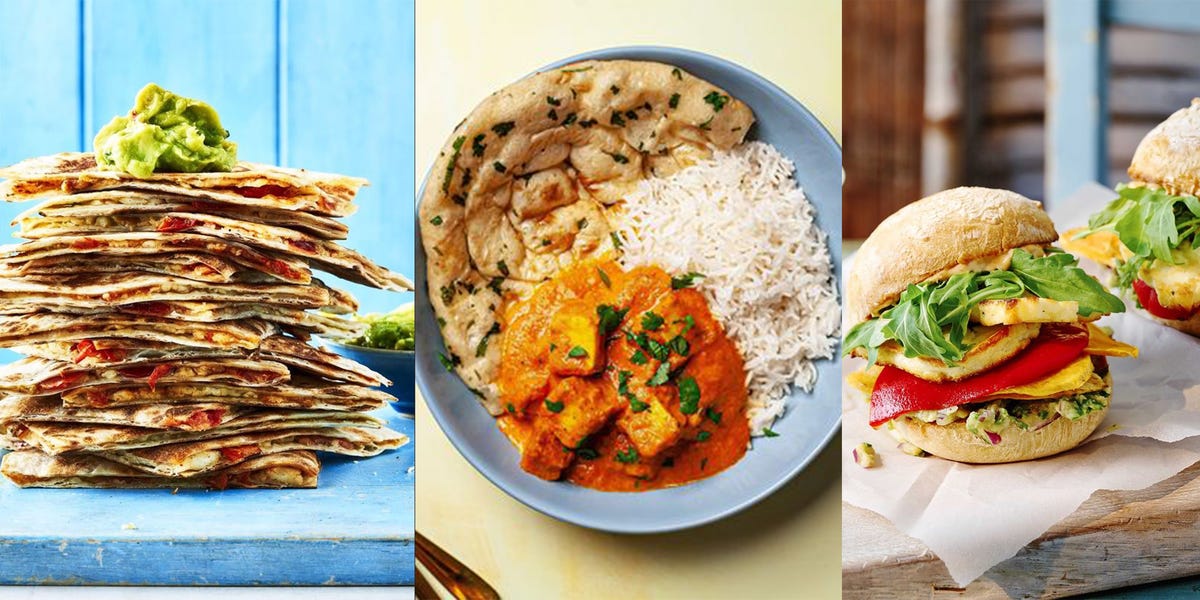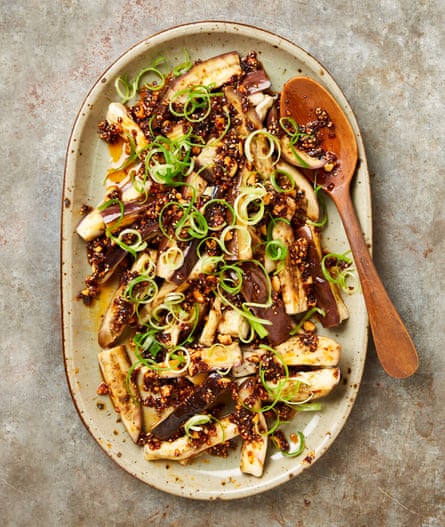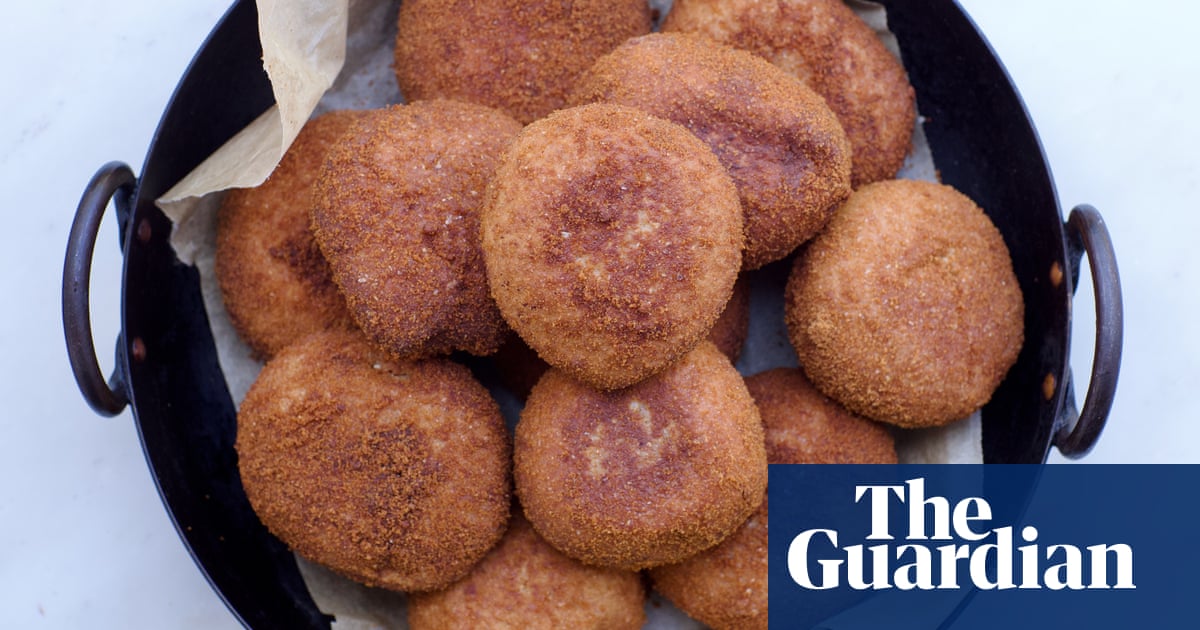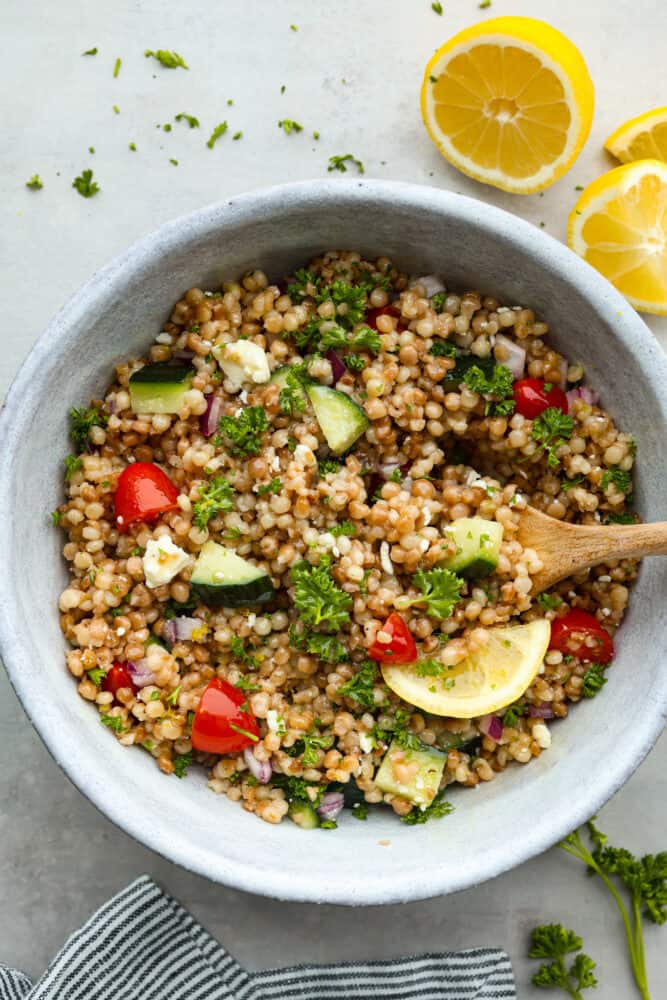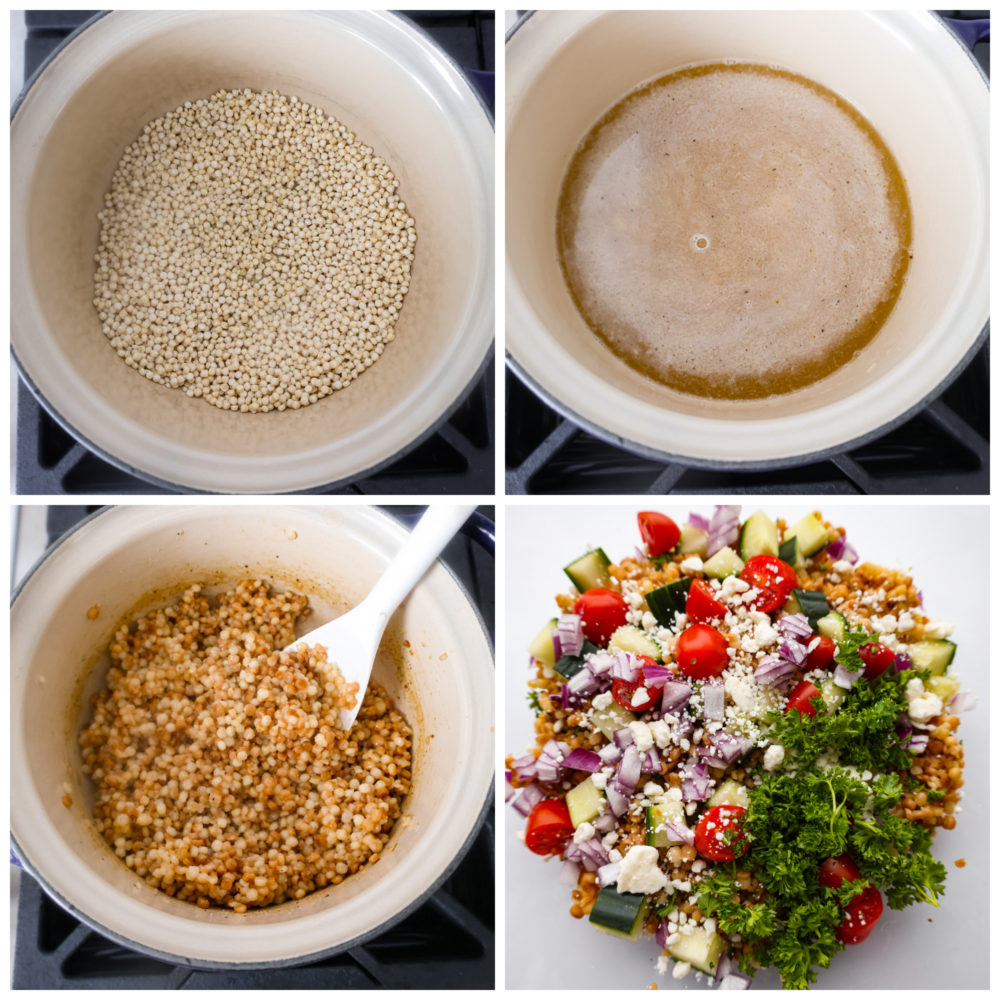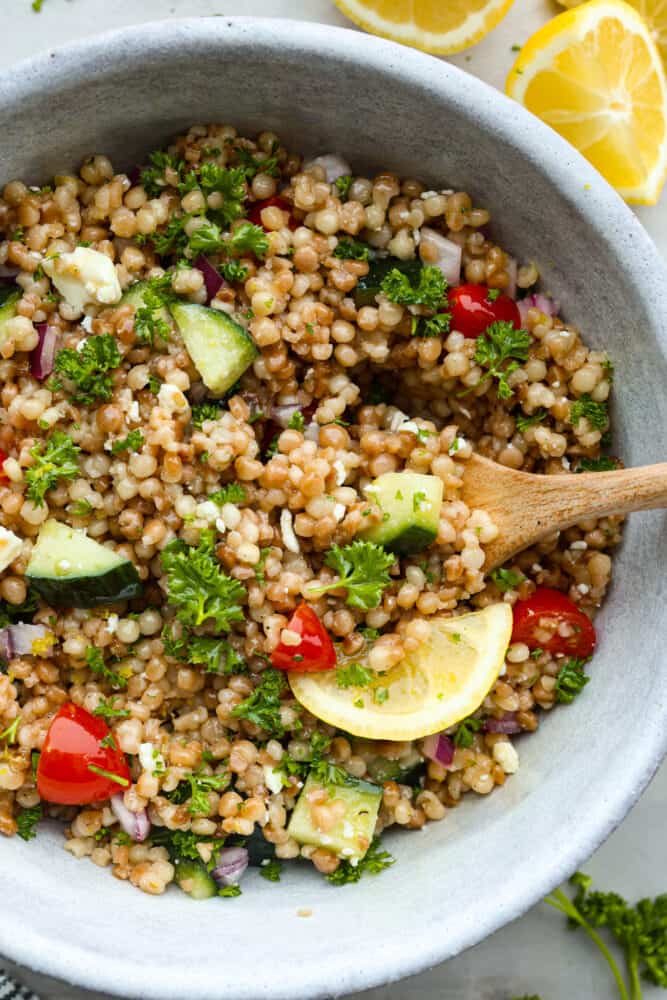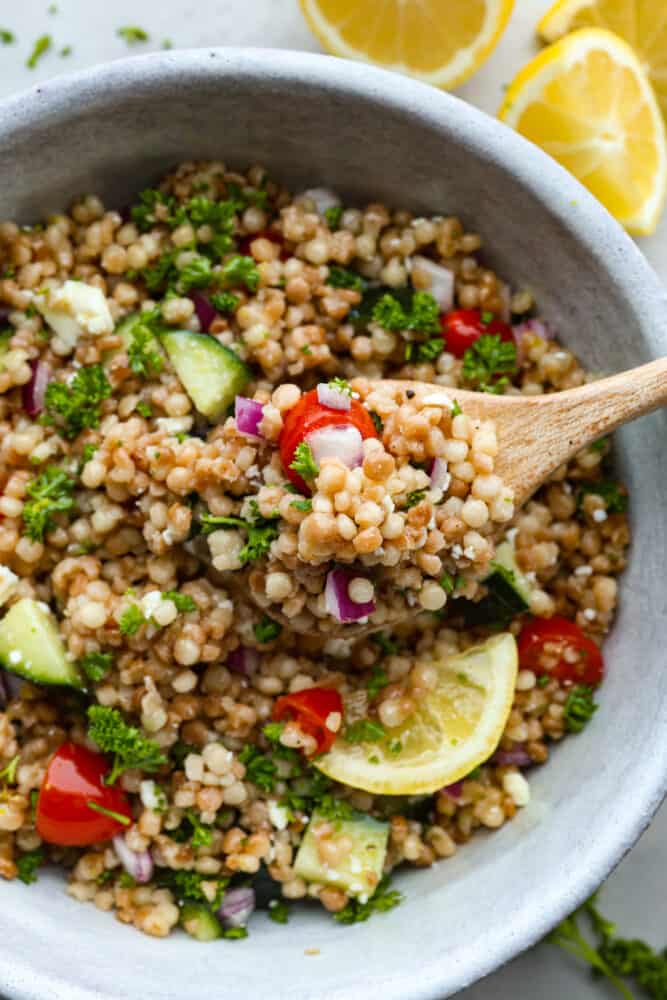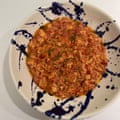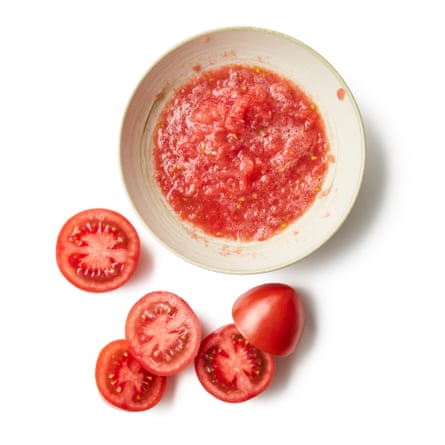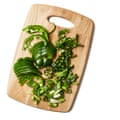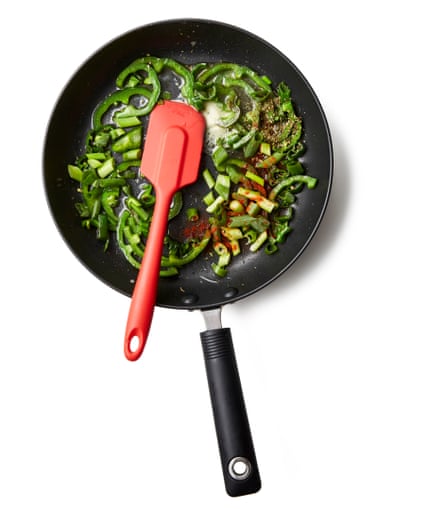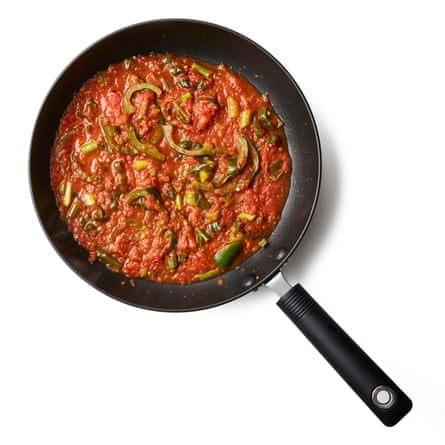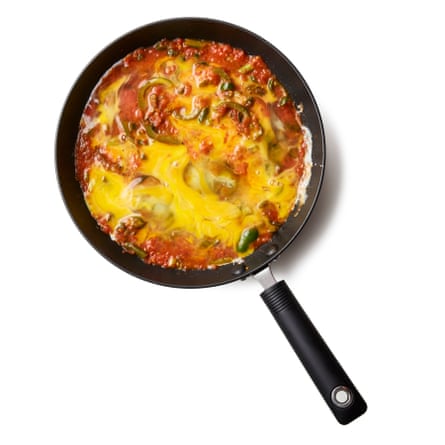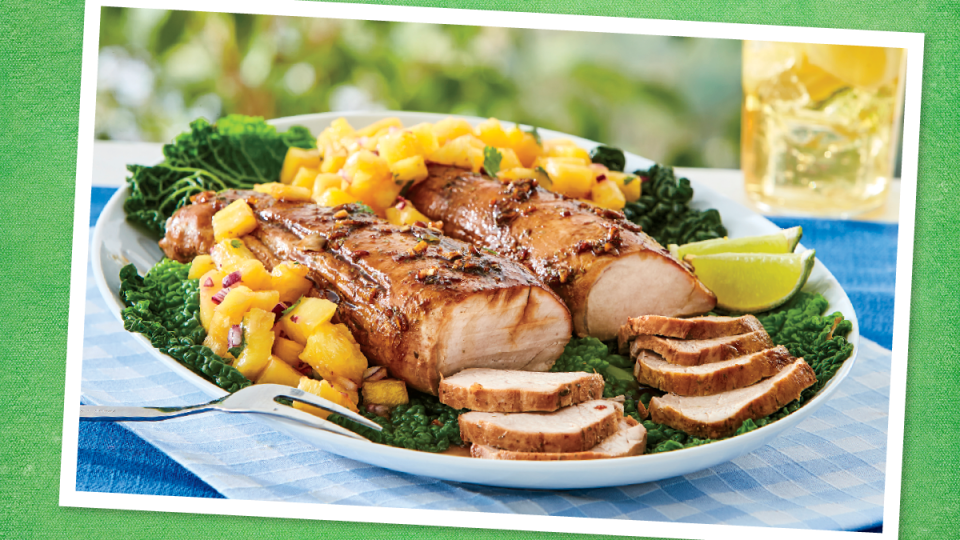:max_bytes(150000):strip_icc()/64227841-47a0471010024608874124edcf4e6f47.jpg)
Summer is in the air, so welcome the season's fresh flavors with these easy dinner recipes. All you need is one pot or pan to whip up these meals, making them simple options for the months to come. Plus, they're packed with anti-inflammatory ingredients like broccoli, dark leafy greens, avocado and fish, so they can help relieve stubborn symptoms like joint stiffness, mental fog and digestive issues. Recipes like our Vegan Coconut Chickpea Curry and Sheet-Pan Chicken Fajitas are healthy and delicious choices for dinner this summer.
One-Pan Garlicky Shrimp & Rice
This one-pan shrimp and rice recipe makes a great weeknight dinner with easy cleanup. The garlic mellows as it cooks and infuses its flavor into the sweet shrimp and rice in the pan. A squeeze of lemon at the end brightens up the dish.
Sheet-Pan Chicken Fajitas
One sheet pan is all you'll need to whip up this chicken fajita recipe. They're quick and easy to make and cleanup is even faster!
Vegan Coconut Chickpea Curry
To make this 20-minute vegan curry even faster, buy precut veggies from the salad bar at the grocery store. To make it a full, satisfying dinner, serve over cooked brown rice. When shopping for simmer sauce, look for one with 400 mg of sodium or less and check the ingredient list for cream or fish sauce if you want to keep this vegan. If you like a spicy kick, add a few dashes of your favorite hot sauce at the end.
Easy Salmon Cakes
These healthy salmon cakes are a delicious way to boost your intake of omega-3s. It is also a great way to use convenient canned (or leftover) salmon.
One-Pan Roasted Chicken Legs with Citrus & Star Anise
Whole chicken legs make a beautiful presentation, but you can opt for drumsticks or chicken thighs—just watch the timing, as they'll be ready a little faster. This recipe only uses one skillet to help you cut down on cleanup. Serve with bok choy and rice to soak up all the delicious sauce.
Chicken & Kale Taco Salad with Jalapeño-Avocado Ranch
This healthy, super-fast salad recipe swaps out romaine for kale, giving you more than 10 times the vitamin C. Easy flavor hacks like store-bought ranch and pickled jalapeños help make a creamy, tangy and spicy dressing you'll want to drizzle on everything from salad to sliced veggies and shredded poached chicken.
One-Pot Pasta with Tuna
Use the one-pot pasta cooking method to make this tuna pasta recipe that calls for just 5 ingredients and is ready in just over half an hour. For extra crunch and a tuna noodle casserole feel, sprinkle this speedy pasta dish with toasted whole-wheat panko breadcrumbs.
Shirataki Noodles with Chicken, Feta & Tomato
We pair shirataki noodles with feta and tomatoes in this quick and vibrant dinner recipe. The tomatoes release their juices to create a glossy sauce that clings to the noodles and carries with it the flavors of garlic, oregano and basil. Crumbled feta and Kalamata olives add a briny punch.
Sautéed Striped Bass with Lemon and Herb Sauce
If you find sea bass to be strong-flavored, remove the pan drippings from the skillet before making the sauce for a milder final product. The wine-butter sauce is a good complement to the dish, especially with caramelized lemon notes.
20-Minute Chicken Cutlets with Creamy Pesto Sauce
Serve these creamy pesto chicken cutlets over your favorite pasta or zucchini noodles. This easy dinner recipe is sure to become a new family favorite.
One-Pot Pasta With Spinach & Tomatoes
This one-pot pasta dinner is simple, fresh, and healthy—what's not to love? Cooking the pasta right in the sauce saves time and cleanup while infusing the noodles with more flavor. This speedy recipe is also endlessly adaptable, and lends itself to plenty of easy ingredient swaps (make sure to check out the clever riffs below). Change up the spinach for any vegetables you have on hand such as sliced zucchini and mushrooms, or add leftover chicken or cooked and crumbled sausage. We've happily embraced whole-wheat spaghetti as a healthier alternative to white pasta; it works especially well in this one-pot application.
Skillet Chicken with Orzo & Tomatoes
In this healthy chicken recipe, chicken thighs are infused with lemon, garlic and herbs and paired with orzo that's perfectly al dente. Charred tomatoes and onions add full flavor to complete this easy, one-skillet dinner.
Greek Salad with Edamame
Edamame adds protein to the classic Greek salad: romaine, tomatoes, cucumber, feta and olives. Serve with toasted pita brushed with olive oil and sprinkled with dried oregano or za'atar.
One-Pot Garlicky Shrimp & Broccoli
Shrimp and broccoli cook quickly in this easy, one-pot recipe, making it perfect for busy weeknights. Serve this healthy shrimp recipe over whole grains or rice.
Cauliflower Fajita Skillet
Thinly sliced cauliflower florets mimic the signature shape of fajita meat in this dish. We cook it in a cast-iron skillet for that tableside sizzle you'd get at a restaurant.
Chicken Cutlets with Sun-Dried Tomato Cream Sauce
Though a chicken cutlet may be a chicken breast cut in half, this recipe shows how to make chicken cutlets with double the deliciousness. A jar of sun-dried tomatoes does double duty for this healthy dinner idea. The flavorful oil they're packed in is used to sauté the chicken, and the tomatoes go into the cream sauce.
Pineapple Tofu Stir-Fry
At last--a sweet-and-sour dish with a fresh, not cloying, taste. Add a pinch of crushed red pepper, a splash of chile-garlic sauce or a dash of hot sauce to give it a little heat.
Chicken Club Wraps
Whole-wheat tortillas provide a tasty twist in this quick grilled chicken breast recipe that combines all the elements of a classic club sandwich into a wrap. Serve with extra napkins.
from "recipes" - Google News https://ift.tt/J1LEfqD
via IFTTT
